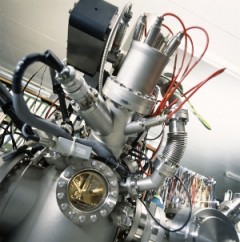
Detecting low energy ions: a challenge
The detectors used in most high-end commercial time-of-flight mass spectrometers, as well as the position sensitive detectors used in imaging mass spectrometry, use micro-channel plates (MCPs) to convert incident ions into a measurable current.
For imaging applications, the electrons produced by the MCP can either be accelerated towards a phosphor screen or detected directly eg using one of the new generation of CMOS-based electron detectors.
Optical detection using a phosphor is currently the standard for most imaging experiments despite the decay time of the phosphor imposing a considerable limitation on the attainable time resolution in such measurements.
Competitive advantage
Researchers at the University of Oxford and the Science & Technology Facilities Council have invented a new type of ion detector which offers a number of advantages over current detectors:
- fully-integrated position sensitive ion detector eliminates the need for MCPs and phosphors
- improved time resolution performance over MCP/phosphor combination already demonstrated
- superior ion detection efficiency without the loss of spatial resolution or added complexity of comparable MCP-based approaches
- more robust detector solution which can operate at higher pressures (up to atmospheric) and without the need for a high voltage power supply
Use for this type of detector
Low energy ion detectors are widely used in such areas as mass spectrometry, ion imaging and atom probe tomography. It is expected that this invention will be of significant interest to manufacturers in those specific fields as well as the scientific detector industry more generally.
Patent protection
The underlying technology is the subject of a UK patent application. Companies interested in progressing the commercial opportunities are invited to contact Oxford University Innovation. Request more information if you would like to discuss this further.

